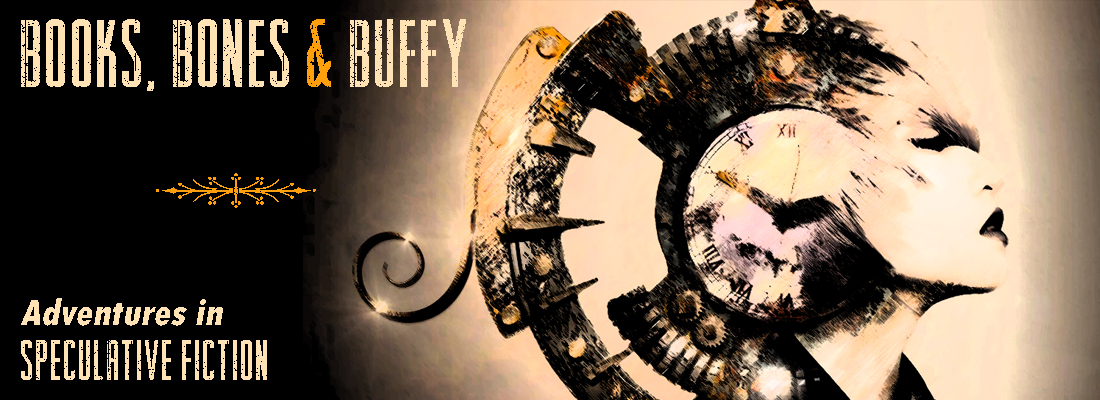This wonderful anthology was published only a month after Ray Bradbury passed away, so the timing is especially poignant. Editors Sam Weller and Mort Castle have put together an amazing collection of stories that manages to feel “Bradbury-esque” without losing the flavor of each particular writer’s style, a remarkable achievement. Each author was asked to write a short story to celebrate the esteemed man, and each one took that instruction to heart in different ways. Some of the stories are directly related to specific Bradbury tales, and are instantly familiar. Others evoke the emotions one feels when reading a Ray Bradbury story, and you will recognize those too.
These stories explore common Bradbury themes, such as loss, marriage, death, loneliness, and especially the future. Bradbury himself wrote many stories that posed the question “What will the future be like?” As many of these were written in the 40’s, 50’s and 60’s, the idea of space travel was new and exciting and gave writers the freedom to imagine whatever they wanted to. Several stories in this collection pay tribute to Bradbury’s love of science fiction and what a future Earth might be like. Kelly Link’s Two Houses is a great example, a very strange tale about twelve women traveling through space on a ship called The House of Secrets, complete with a talking computer named Maureen that can alter the ship’s décor at will. Probably my favorite story of the bunch is Young Pilgrims by Joe Meno, where two children living on an unnamed planet, a desolate place with un-breathable air run by strict and menacing adults, discover an underground Eden filled with remarkable plants and animals and oxygenated air. In the afterwards, Meno mentions that he was influenced by Bradbury’s famous story The Veldt, which was immediately recognizable to me. Robert McCammon’s Children of the Bedtime Machine is a hopeful story set in another desolate future, and describes a lonely woman who finds a machine that when cranked, shows a hologram of a child. The woman begins to read stories to him every night, and of course she reads to him from one of Bradbury’s books.
Many of the stories derive their inspiration from specific Bradbury tales. Joe Hill’s By the Silver Water of Lake Champlain is a companion piece to The Fog Horn, and has an eerie, otherworldly quality to its sad story about a dead sea monster. The Companions, by David Morrell, imagines Bradbury’s The Crowd in reverse, and is a spine-tingling tale of guardian angels. Cat on a Bad Couch by Lee Martin gets its inspiration from I See You Never, although Martin explains in his afterward notes that it was the way Bradbury crafted his story that gave him inspiration. The Tattoo by Bonnie Jo Campbell is, as you might expect, an homage Bradbury’s The Illustrated Man, and is an odd and magical story about a man who gets an enchanted tattoo at a carnival, a tattoo whose pictures change and form stories, stories that don’t always have happy endings. Audrey Niffenegger gives us her take on The Playground in Backwards in Seville, a short but powerful tale of a grown woman who wants to give her aging father her extra years, and manages to find a way to do so. One of the funnier stories is by Charles Yu as he re-imagines There Will Come Soft Rains, in Earth (A Gift Shop), where a future Earth is devoid of people, except as a tourist attraction.
Some of the writers had personal relationships with Ray Bradbury himself, either through years of friendship or correspondence, and in their afterwards notes they explain these relationships, which I thought was fascinating. Another of my favorites is Dan Chaon’s Little America, which starts out with a sinister premise (a man has kidnapped and tied up a small boy), but does not turn out the way the reader expects it to. Jacquelyn Mitchard, an author I would not expect to find in an anthology like this, used her years of writing back and forth with Ray to start her own writing career, and here gives us a horror story with familiar Bradbury overtones. The collection concludes with a short and chilling look at the end of life itself, Weariness by powerhouse Harlan Ellison, a man who had a life-long friendship with Ray.
Even the editors get in on the fun and contribute stories. Sam Weller’s The Girl in the Funeral Parlor is a poignant look at a man who meets his true love after she’s died, and Mort Castle’s Light is an unexpected series of snapshots of the life and death of Marilyn Monroe, told in a sparse but potent voice. In both cases Bradbury’s influence is clear.
I wish I had the space to specifically mention each story in Shadow Show, but I will say that I was moved in one way or another by all of them. The collection as a whole is filled with everything you would expect from Bradbury’s own stories: wonder, sadness, the joys of childhood, and enough imagination to fill ten rocket ships. It made me want to dust off my old Bradbury paperbacks and reread the stories that I remember from my earliest days of reading fantasy and science fiction. I’ll have to admit it’s been a while since I’ve read a Bradbury story, and if it’s been a while for you too, and you’re looking for a nostalgic reading experience, you’ll want to dive into Shadow Show as soon as possible.
Many thanks to Library Thing for supplying a review copy.



Leave a Reply